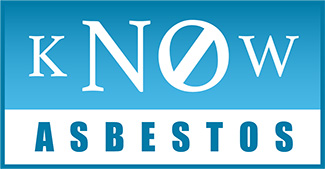Asbestos is a known human carcinogen and can cause chronic lung disease as well as lung and other cancers.
What type of workers might be at risk?
The following types of workers are at a higher risk for asbestos exposure:
Construction Workers
Plumbers
Electricians
Carpet/Flooring Installers
Fire/Water Restoration
What materials contain asbestos?
Some materials are presumed to contain asbestos if installed before 1981. Examples of these materials, as well as other presumed asbestos-containing materials are:
According to the EPA, the manufacture, importation, processing and distribution in commerce of these products, as well as some others not listed, are not banned. The list below does not include every product that may contain asbestos, but these are the most common.
- Automatic transmission components
- Brake blocks
- Ceiling tiles and spray-on coatings (acoustic and fireproofing)
- Cement corrugated sheet
- Cement flat sheet
- Cement pipe
- Cement shingle
- Clothing
- Clutch facings
- Disk brake pads
- Drum brake linings
- Floor tiles and vinyl flooring, backing and mastic
- Friction materials
- Gaskets
- Heat-resistant textiles
- Millboard
- Non-roofing coatings
- Pipe and boiler and duct coverings (thermal system insulation)
- Plaster, cement, putties and caulk
- Roof coatings
- Roofing felt
- Roofing, shingles and siding
- Textured paints
- Vermiculite attic insulation
- Vinyl floor tile
OSHA Standards OSHA has three standards to protect workers from the hazards of asbestos depending on the type of workplace. For complete information on all of the requirements, see the standard specific to your type of workplace:
General Industry: 29 CFR 1910.1001 covers work in general industry, such as exposure during brake and clutch repair, maintenance work, and manufacture of asbestos-containing products.
Shipyards: 29 CFR 1915.1001 covers construction, alteration, repair, maintenance, renovation and demolition of structures containing asbestos during work in shipyards.
Construction: 29 CFR 1926.1101 covers construction, alteration, repair, maintenance, or renovation and demolition of structures containing asbestos.
What protections exist in the Standards?
Permissible Exposure Limit (PEL) for asbestos is 0.1 fiber per cubic centimeter of air as an eight-hour time-weighted average (TWA), with an excursion limit (EL) of 1.0 asbestos fibers per cubic centimeter over a 30-minute period. The employer must ensure that no one is exposed above these limits
What can you do if you think you are at risk?
Know your rights. With respect to the protection of workers from the potential harm from exposure to asbestos, the Environmental Protection Agency (EPA) and the Occupational Safety and Health Administration (OSHA), part of the Department of Labor, each have regulatory responsibility. Through regulatory authority under the Occupational Safety and Health Act, OSHA is responsible for establishing standards to protect the health and safety of workers who may be exposed to asbestos in the work place. Through EPA's regulatory authority under the Toxic Substances Control Act (TSCA) (PDF) (35 pp, 280 K, About PDF), the EPA is responsible for protecting state and local employees who may be exposed to asbestos from their jobs in states without an OSHA-approved state occupational safety and health plan who may be exposed to asbestos from their jobs.
OSHA information
OSHA states the following: “The OSHA law also prohibits employers from retaliating against employees for exercising their rights under the law (including the right to raise a health and safety concern or report an injury). For more information see www.whistleblowers.gov or Workers' rights under the OSH Act. OSHA can help answer questions or concerns from employers and workers. To reach your regional or area OSHA office, go to the OSHA Offices by State webpage or call 1-800-321-OSHA (6742).”


